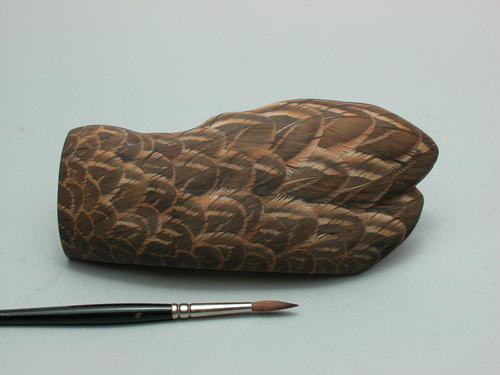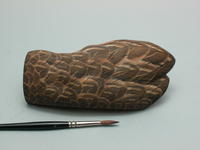A Side of Side Pockets
It's just one part of a decoy--but it's an important one.

Glenn McMurdo’s interest in decoy carving began in 1985. Since then Glenn, now a master carver, has written numerous how-to articles and has judged carving competitions from coast to coast across Canada and the United States. His most recent Workbench Project is Green-Winged Teal Pair. Email mcmurdocarvings@sympatico.ca or phone (905) 372-5821.Castings of this side pocket or full life-size castings of other species are available.
A decoy is more than the sum of its parts, of course, but it’s still necessary to get all the different areas right if you want a realistic bird. In this article, I concentrate on just one aspect of a duck—the side pockets. I try to give some softness to the final product in this area by carving lumps and bumps and adding soft shadows and highlights to the surface. I paint the darker areas to enhance the shadows and make the lighter areas complement the shadowed portions. This adds more softness. Although this side pocket is from a mallard hen, you can use these techniques with different colors for the side pockets of many waterfowl.
This article is from Wildfowl Carving Magazine’s Spring 2014 issue.
Read NextBeginner's Notebook: My Crow Rig



